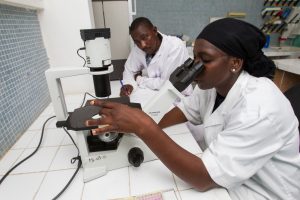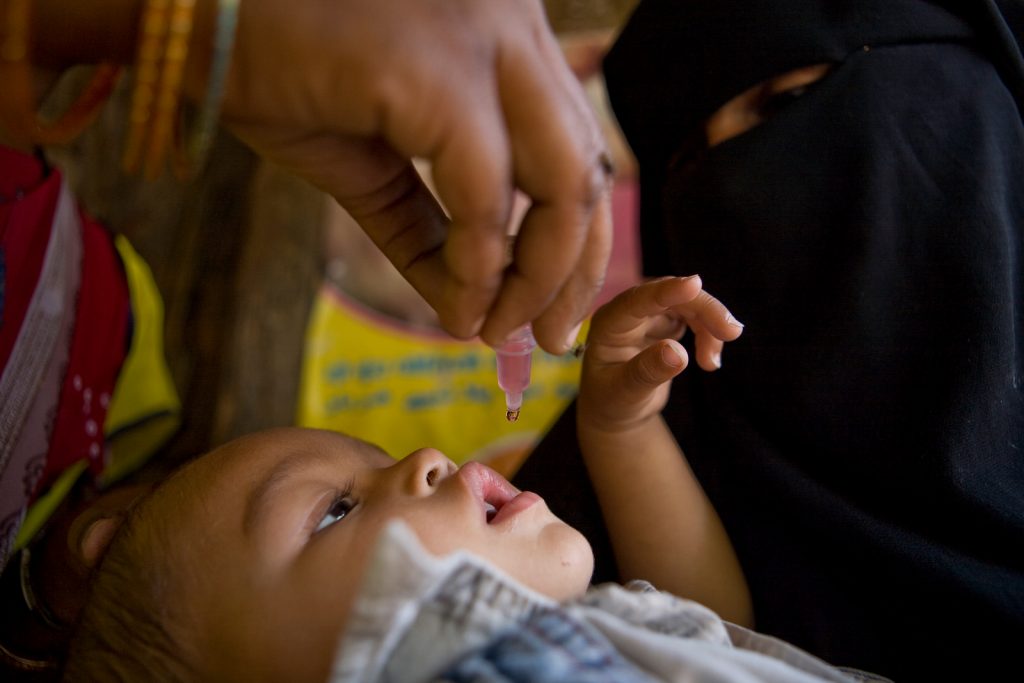
BeyondPolio is focused on the eradication of polio worldwide. We are interested in engaging with the impressive community of experts including scientists, researchers, innovators and financiers to develop creative problem solvers in polio vaccine innovation and deployment efforts. Our goal is to support the people and organizations who are contributing solutions to important problems related to increasing the affordability and utilization of inactivated poliovirus vaccine (IPV).
There is a powerful collective intelligence of creative minds from around the globe to bring fresh ideas to bear to help complete the important fight against polio. Participation of people from diverse disciplines and backgrounds, including those with expertise outside of polio or vaccination fields, is especially encouraged.
Current Challenge: Reducing the Cost of IPV
One of our primary goals is to identify problems or opportunity areas where eventual solutions might significantly reduce the cost of inactivated poliovirus vaccine (IPV) use in low- and middle-income countries.
The team at Spencer Trask, led by Kevin Kimberlin support the many great organizations working toward the goal of eradicating polio such as the Global Polio Eradication Initiative, the Gates Foundation and the Salk Institute. The Global Polio Eradication Initiative is closing in on its first objective, which is to stop the transmission of naturally occurring “wild” polioviruses throughout the world. Once that step has been achieved, it will be necessary to stop routine immunization with the oral poliovirus vaccine (OPV) currently used in the eradication program. OPV contains live, weakened viruses that can regain the ability to cause polio in the same way as wild polioviruses. Indeed, around a quarter of all cases of polio in the world today result from the use of OPV. Wealthy countries now use IPV, since the inactivated viruses in IPV cannot produce polio. However, the current cost of IPV represents a barrier to its use by low- and middle-income countries. Since there will be a continued risk of polio for at least some period after OPV is stopped, it will be important for these countries to be able to afford IPV until all polio is eradicated from the world.

There are unexplored ideas that will point to unexpected ways to effect cost savings related to the use of IPV.
One of the necessary changes that needs to occur is to reduce the cost of immunization with IPV by decreasing the total amount of poliovirus antigen required to induce adequate immunity through:
- Intradermal delivery of reduced volumes of IPV (including consideration of novel or improved cost-saving features of intradermal delivery devices)
- Use of adjuvants to allow a reduced IPV antigen content per dose
- Reducing the number of doses of IPV administered
Other leading ideas are addressing ways to:
- Decrease IPV manufacturing costs
- Decrease biosafety containment requirements through use of less-infectious or non-infectious poliovirus seed strains to facilitate IPV production in low- and middle-income countries
- Improve IPV thermostability to reduce the cost of cold-chain requirements and to prevent vaccine degradation/wastage

Work is being carried out in these areas already, including studies funded by the Global Polio Eradication Initiative and the Bill & Melinda Gates Foundation. Our intention is to continually support these organizations and to add to the pool of useful ideas being explored through the work being done at InnoCentive and the investment in new ideas and companies by Spencer Trask.

